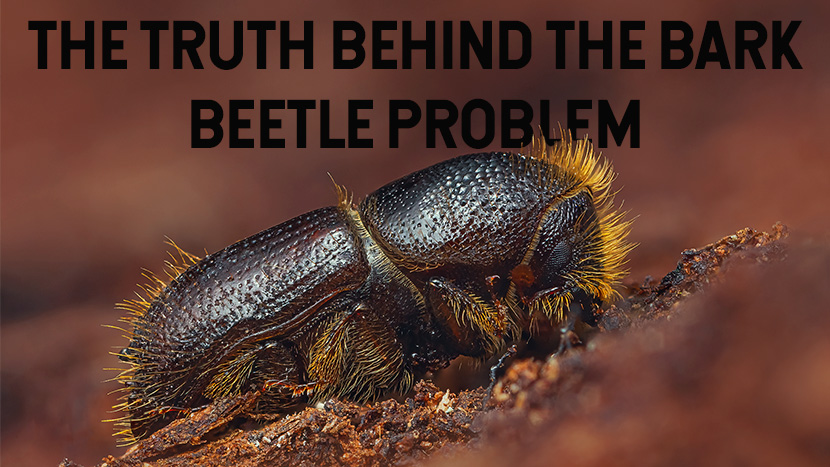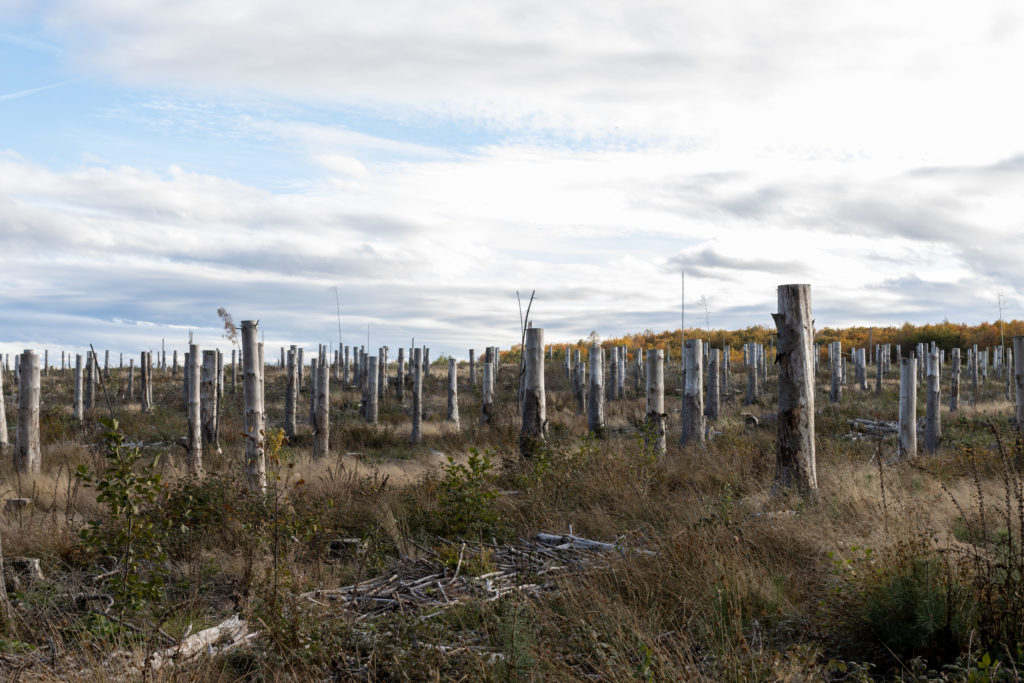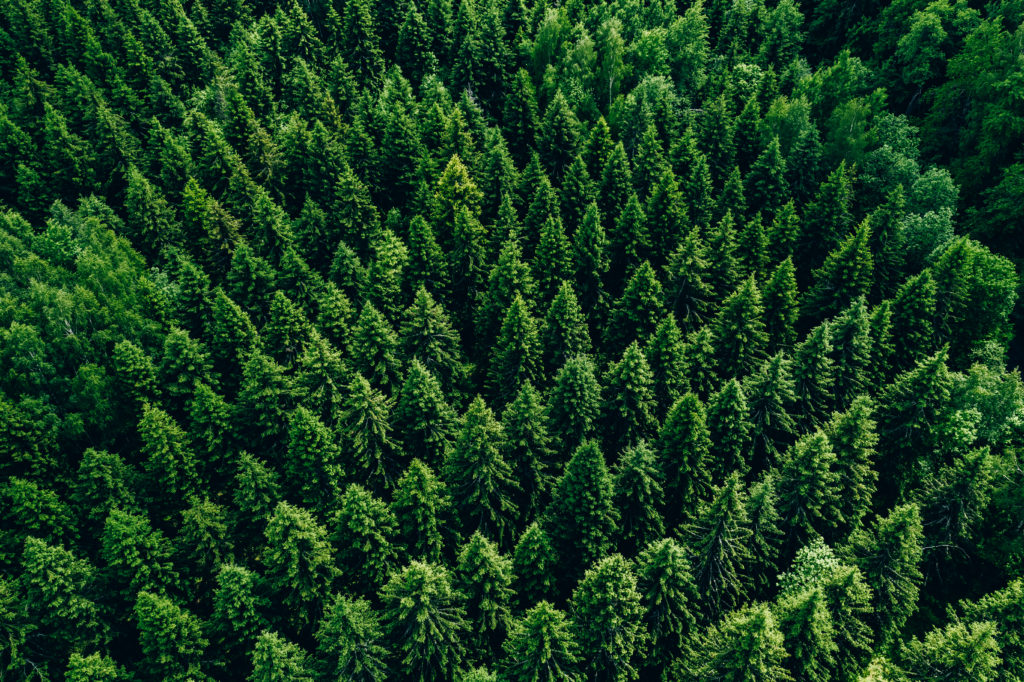Why Europe’s Trees are Dying

Are Bark Beetle Infestations Killing Spruce Trees? Not Exactly
Imagine that you are a forester. You plant and harvest trees to use them for the products that people need around the world, such as building materials, furniture, and paper. Your family has been waiting for a large section of your productive spruce forest to reach its peak age of harvest for literally decades, because that is how they have always done things. However, very suddenly, you lose thousands of trees, and millions of dollars. You are in ruin. And it is all thanks to one tiny beetle! Or is it?
You may have seen headlines about bark beetles decimating spruce forests in Europe, and though bark beetle outbreaks are happening and they are disastrous, it turns out that bark beetles are not the primary drivers of tree death, but more a symptom of unhealthy and unnatural forests. So, what is the whole story?

The Spruce Tree
There are a few different Native Trees in Europe, but one of the most important for the European lumber industry is the Norway Spruce (Picea abies). This tree is a large evergreen tree that grows up to 60 meters tall and has a narrow, conical shape with drooping branches. The needles are dark green, four-sided, and about 1 inch long. The cones are about 4-7 inches long and hang downward.
Today, it is one of the most widely planted spruce species in the world. It is extremely valuable for wood production, as well as making pulp and even for use as Christmas trees. They grow relatively quickly, tall, and wide, so they are a great timber species. However, here is where the problem comes in.
Since the Norway spruce is so valuable, the traditional method of forestry was to plant a dense forest of purely spruce trees – a complete monoculture – until they are 80-100 years old, clear cut the area, and start over again. This method makes it easier for foresters to plan as well as harvest, but it is also the perfect recipe for a pest species, like bark beetles.
The problem with spruce forests
If you think about it, densely packing a bunch of spruce trees in an area is like inviting bark beetles to a buffet with an all-you-can-eat of their favorite food. Furthermore, it turns out that bark beetles prefer trees that are about 80-100 years old, so if the whole forest is the same tree and the same age, it easily becomes a place for beetle populations to boom. To make a bad thing worse, when you add changing climate and drought to the mix, especially since densely packed trees are all competing for the same resource, you get an abundance of weak and sick trees. To understand the problem fully, it helps to start with bark beetles and how they attack and eventually kill these weakened spruce trees.
What is a bark beetle?
The common name “bark beetle” usually refers to the 6000-some species of beetles in the subfamily Scolytinae, part of the weevil family (Curculionidae). There are many species that have the similar behaviors of burying into bark, but interestingly, only two genera, Ips and Dendroctonus, can really kill trees. In the case of the Norway spruce tree problem we are dealing specifically with the European Bark beetle (Ips typographus).
The Bark beetle life cycle
- Adult beetles find weak and sick trees
- They bury into the bark, creating a maze of galleries
- They lay eggs here and when larva emerge they eat the tree phloem layer
- There is also evidence that some Scolytidae feed on the fungi that consequently grows in these galleries
- To make things even more bleak for the tree that has been attacked by a European bark beetle, the adults release a pheromone that attracts more individuals to a host tree, creating a mass attack
The reason that bark beetles only select weak or sick trees is that totally healthy trees are able to protect against beetles with their sap, however, sick trees do not have the energy to allocate to this defense. A combination of loss of phloem and energy, paired with the facilitation of fungi to run rampant among these galleries, will eventually kill the tree. Now, even though bark beetles are able to effectively kill off sick trees, this devastating loss of spruce trees in Europe isn’t caused by the beetles directly.
Bark Beetles, Monocultures, and Drought

In a natural and healthy forest, bark beetles are just another piece of a complex ecosystem with different relationships between plants, animals and fungi. Realistically, bark beetles are simply finishing off already sick and weak trees and helping out the forest.
Killing these old trees helps to free up space in the forest, giving other plants or trees a chance to grow more, and helps to recycle valuable nutrients. Bark beetle larva are also an important food source for woodpeckers and other animals.
So, how does a native beetle that is a normal part of an ecosystem become an overwhelming pest that was able to kill over 22 million cubic meters of spruce in Czechia and 11 million in Germany in 2019 alone? Simply put, they aren’t really living in a natural ecosystem anymore and the climate has been drastically changing.
The Monoculture Problem
Monocultures, which means planting of one crop (or tree) in an area without any other species, are quite common in agriculture, despite the many problems they present. Monocultures make planting, growing, and harvesting logistics much easier for farmers and foresters so it is understandable why it is done, but ecologically it is a nightmare. Having the same plant grown in an area with nothing else makes for easy spread of disease, and is essentially an endless buffet for pests. Additionally, these plants are often packed densely together, causing them to battle each other for the exact same resources.
Spruce monocultures
Norway spruce were planted in mass numbers and monocultures because they are valuable and foresters wanted to be able to plant as many as they could in an area, which makes snes. On the other hand, it does not mimic a natural forest, and it turns out that it ends up being a lot more costly in the long run.
You can imagine, if there is a forest that is densely packed with the European spruce beetle’s food source, they easily grow to exponential numbers and keep attacking more and more trees. To further the problem, there is an ideal age of tree for bark beetles – 80-10 years old – and since these forests were planted with trees of the same age class, all the trees become prime beetle real estate at the same time. Essentially we have made it all too easy for the beetles to take over.
Ultimately, we must remember the last piece to the puzzle: that bark beetles only really attack trees that aren’t healthy. When the trees are packed together they are also battling for resources, more so when they are the exact same species with the same resource requirements. This becomes especially problematic when any kind of environmental stress comes along, such as a drought.

The Drought Problem
The main stressor that is causing weak spruce trees in Europe over the last 5-10 years is drought. With a lack of rain, the Norway spruce trees would already be having issues, and now packed together with other spruce trees they are struggling to stay healthy, and unable to fight off attacks by the beetles.
The problem with relying on one kind of tree is that if new conditions come along that are difficult for said species to handle, we end up with nothing. You know how the old saying goes, don’t put all your eggs in one basket. In a more diverse forest, some trees may be more resistant to a disaster, like a drought; this means even if the spruce are dying, there may be other trees that can successfully grow during that time.
With all of that said, we can see that the bark beetles aren’t really the direct cause of the loss of all of these spruce trees, but more a symptom of an unnatural and unhealthy forest. So, what is the solution to stop this from happening?
How Do We Stop Bark Beetle Infestations?
You can watch this video below to see the amazing work done by researchers and foresters to work towards healthier and more natural productive forests, but here are the basics of it.
Forests need to be diverse in order to be healthy, and trees need more space to grow. With this information, foresters are not only thinning out less healthy trees to allow more space for the spruce that is there, but they are also making sure to plant different trees – like fir and beech – of different ages, to properly reflect a natural forest.
The great thing about developing more diverse and natural forests is that, not only can you see the benefits of this diversity reflected in the wildlife here, and enjoy a more beautiful forest, but foresters are actually reaping the benefits, even in the short term. The healthier trees are growing larger and putting on more larger rings as they age allowing for better harvests. Additionally, harvesting trees little by little instead of clear cutting helps give foresters a more steady income.
All in all, forests are really valuable to people and the planet in terms of resources, recreation, carbon sequestration, and so much more. So, finding ways to better manage the forests that we are harvesting from is crucial. The good news is, you can already see the difference this more diverse approach to forest management is making, and we are optimistic that it is only going to get better.
For more on Norway spruce and bark beetles in Europe, check out climatebeetle.org!

